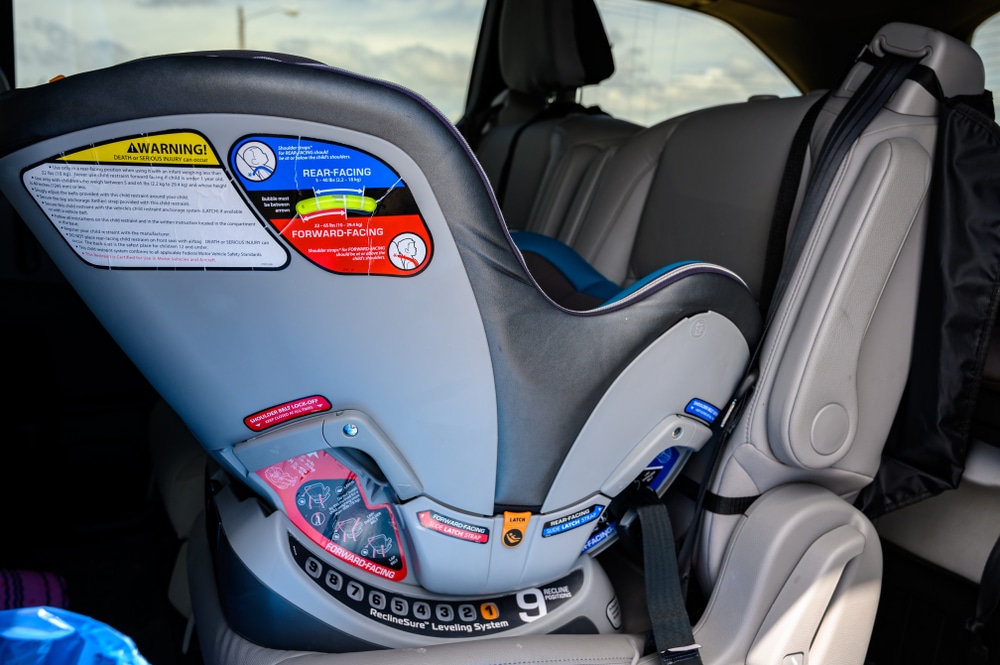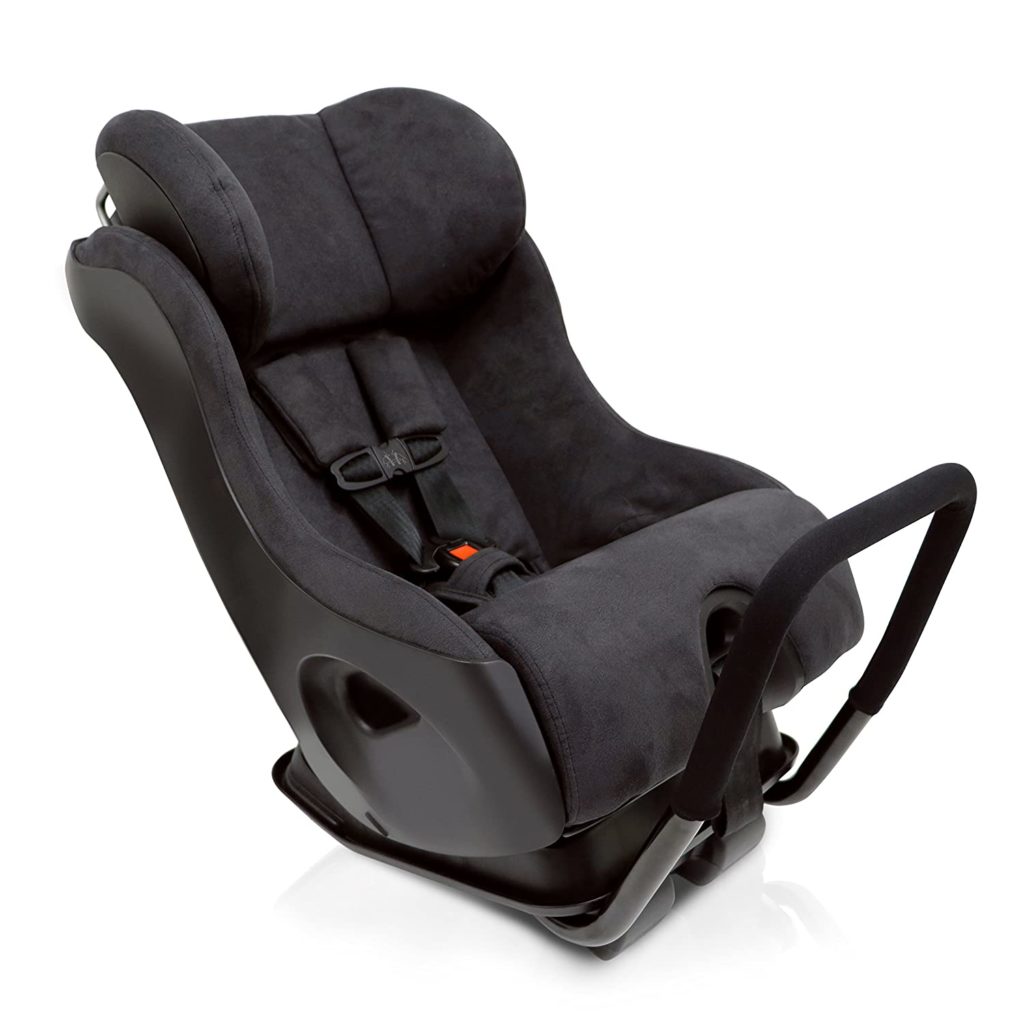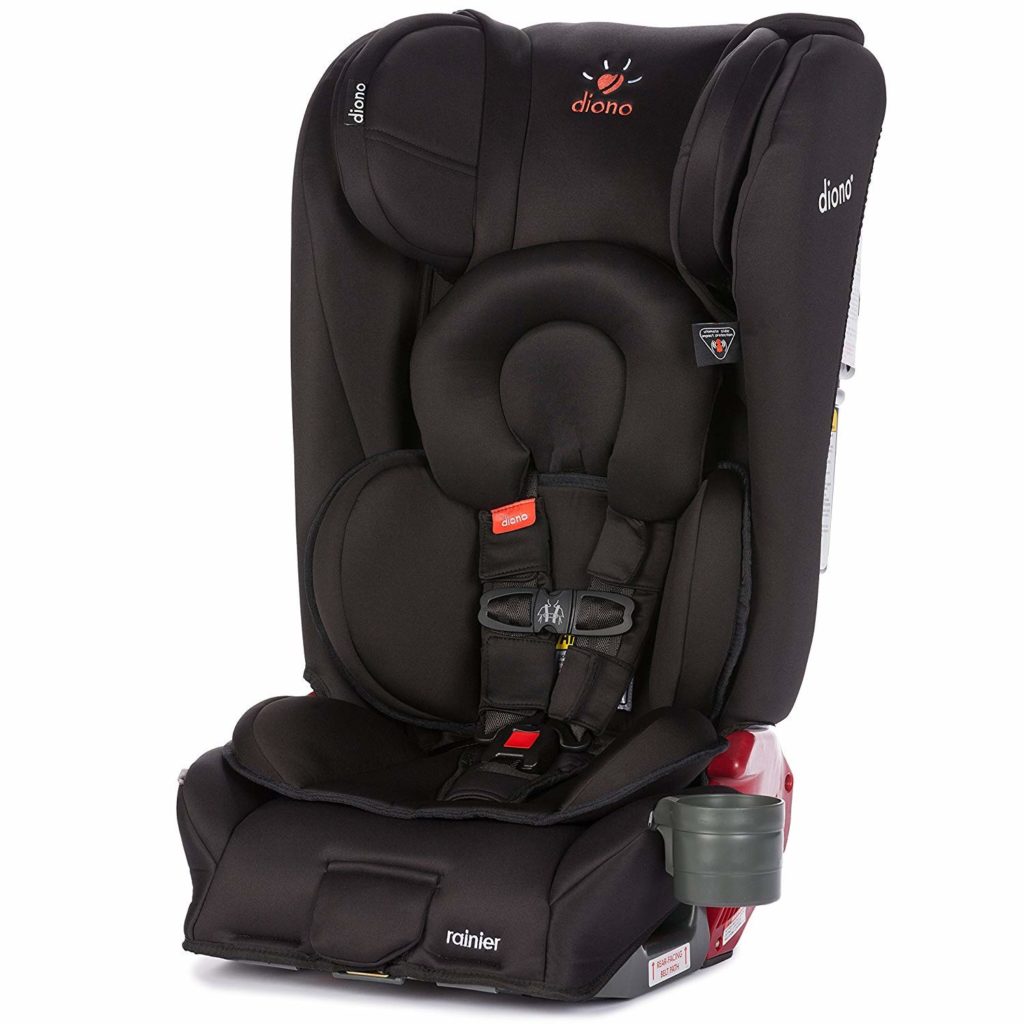If you live in or plan to travel to Maryland with your children, you should be aware of the Maryland child seat laws not only so you’re keeping your child safe but also because you could pay a legal price for failing to do so.
Since restrictions vary from state to state, the laws you follow in your home state may be different than Maryland’s car seat laws. Here’s what you need to know:

What Are Maryland’s Car Seat Laws?
The State of Maryland requires all children ages eight and under or less than 4’9 in height to ride in some kind of a child safety seat. The type of seat depends entirely on your child, as there are different seats for infants, toddlers, and children over the age of four.
There are also booster seats for children who have outgrown their car seats but are not yet tall enough to wear a seat belt safely.
Infant and Toddler Seats

These car seats come only in rear-facing models because their reclining position keeps your baby’s airways open, and they protect your baby’s head, neck, and back in the event of an accident. They have fold-back handles and bases from which you can remove the seat to carry your child around outside of your car.
Children ages 12 months and under should use these rear-facing seats, and you should only place them in the back seat. It’s okay if your baby falls asleep while riding but avoid putting them down when you place them in their seat.
Convertible Seats: Ages One to Four

When your child outgrows their rear-facing infant seat, you can upgrade them to a convertible car seat. This kind of safety seat can switch from rear-facing to a forward-facing car seat and allows you to keep your child in a rear-facing seat for longer.
If your child is still a toddler, make sure they can still recline in their new seat, so their airways stay open.
All-in-One Seats: Ages One and Up

All-in-one child safety seats are different from convertible seats, although you can use them for your growing toddler. Like convertible car seats, they shift from rear-facing to forward-facing, but they can also convert to a booster seat in conjunction vehicle’s lap and shoulder belt with once your child no longer needs a full car seat.
This, too, allows your child to stay in a rear-facing seat for longer. Whether you move from an infant seat to a convertible seat or straight to one of these depends entirely on you and what you feel will protect your child the best.
Always install car seats according to the manufacturer’s directions, and never buy used safety seats because there’s no real way to ensure it’s still sound. Also, never put a rear-facing car seat in the front seat of your car. Airbag deployment can seriously injure your child in a rear-facing car seat.
When Can My Child Stop Using Child Safety Seats?
In Maryland, children can stop using a child safety seat when they’re eight years old or at least four feet nine inches tall. At that point, they’ve outgrown their car seats and probably their booster seats, too.
Using Vehicle Seat Belt Without Booster Seat
To ensure that your child is ready to ride in the car without a booster seat, you need to check how your car’s seat belts fit across their body. Look closely at the following:
- Can your child sit with their back flat against the back of the seat?
- Can they bend their knees comfortably over the seat’s edge?
- Is the lap belt flat and snug across the tops of their thighs (not across their tummy)?
- Does the shoulder strap lie flat across their shoulder and chest, not their neck or face?
- Is your child able to comfortably maintain the above criteria for the duration of a car ride?
Maryland seat belt law requires everyone ages eight and up to wear a belt, no matter where they’re sitting in the car or how old they are. It’s your responsibility as the driver to ensure everyone is properly buckled in before you get underway.
When Can My Child Start Riding in the Front Seat?
In Maryland, there’s no age limit on when you can allow your child to start riding in the front seat. However, just because it’s legal doesn’t mean it’s smart.
While manufacturers have worked to make the front section of a car as safe as possible with crash zones, airbags, and more, it’s still a dangerous for children to ride in the front seat. When airbags deploy, they do so with great force and can injure your child.
Because of that, it’s safer to keep them in the middle and back seat until they’re at least 13 years old.
Penalties for Failing to Obey Maryland’s Car Seat Laws
If you violate Maryland car seat laws or Maryland booster seat laws, you face a $50 fine, which will end up being $82 or more after court costs.
That might not sound so bad, and indeed, many people choose to break a law like this because the punishment for doing so is minimal. However, consider this: If you don’t follow MD car seat laws (or anyone’s car seat laws) and do what you want, what happens to your child if you get into an accident?
Chances are extremely high that you don’t want to learn the answer to that question the hard way.
Why Does Maryland Have Car Seat and Seat Belt Laws?
Riding in cars is one of the most dangerous ways to travel. In 2018, over 600 children died in car accidents, and one-third of them weren’t properly restrained. Over 97,000 more were injured that same year.
Perhaps one of the most disturbing things about these facts is that whether or not the children in cars are properly restrained often depends on whether adults wear their seat belts correctly.
Using a car seat correctly can reduce your child’s risk of injury in a crash by up to 82 percent compared to using vehicle’s seat belt alone. Booster seat usage reduces the risk of injury in children ages four to eight by almost half compared to belt alone.
Using a seat belt reduces the risk of severe injury or death in a crash by about half for adults and older children. These restraints and safety seats save lives and minimize horrible injury in the event of an accident. That’s why these laws exist.
Why Eight Years Old?
A study spanning five states that raised their required ages for car and booster seats to seven or eight found a 17 percent reduction in serious injury and death rates among children in car accidents.
So while many states require safety seats until age six, Maryland’s law helps make children safer for longer.
Final Thoughts
Maryland car seat law requires you to keep your kids in a child safety seat or booster seat until they’re eight years old or four feet nine inches tall. From age eight onward, they must wear a belt no matter where they are in the car.
Car seats and seat belts save lives and help prevent serious injury, and though some people prefer not to wear their seat belts, there’s a correlation between adults who don’t wear their seat belts and children who aren’t properly restrained.
It’s better to follow Maryland’s car seat and seat belt laws than it is to find out the hard way what will happen in a crash if you don’t.





